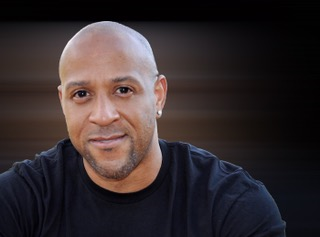An efficient core allows for optimal acceleration, deceleration, and stabilization of the kinetic chain during functional movement. Core training is a vital aspect and common practice of functioning athletes at all levels.
To the average fitness enthusiast, core development might mean rippling washboard abs, but for the competing athlete looking to develop true functional strength, speed, and power, it means so much more. The truth is that developing a strong and efficient core is the body’s anchor to athletic success. That’s why, as performance coaches, we include core training in our programming with the implicit goal of helping our athletes to run faster, jump higher, or throw longer.
The core can be defined as the structures that make up the Lumbo Pelvic Hip complex – mid-thigh to collarbone. A strong core operates as one cohesive unit, enabling the athlete to produce force concentrically, decelerate force eccentrically, and stabilize against normal and abnormal forces in sport and daily activities. A weak core is a fundamental problem leading to inefficient movement, causing injury.
A well-designed core training program can help your athletes gain neuromuscular control, stability, muscular endurance, strength, and power. The programming should be systematic, progressive, and functional, in order to put focus on force production, force reduction, and dynamic stabilization. These attributes allow the athlete to navigate the chaotic environment of competitive sport.
When we think of applying these concepts for our youth athletes there are 3 core exercises every athlete should master en route to developing a stronger power center.
Let’s take a look.
Core Stabilization Excercises
Core exercises that promote stabilization involve little to no motion through the spine and pelvis.
Muscles do not work in isolation, therefore it is vital that train for dynamic stabilization. Efficient functional movement and elite performance elements of sport must be derived through a stable spine. Developing functional core stability will improve neuromuscular efficiency throughout the kinetic chain.
Elbow Plank
- Lie face down on floor in prone position with feet shoulder width apart.
- Place weight on forearms, dorsiflex feet, and pull toes toward shins.
- Tighten glutes and brace core.
- Lift body maintaining strong plumb line through kinetic chain checkpoints (ears, shoulders, hips, and ankles).
Get Started: Start with 3 rounds of 3 x 10 second holds.
Core Strength Exercises
Exercises that involve more dynamic eccentric and concentric movements of the spine through the full range of motion are called core strength exercises.
Core stability is a critical building block of every athletes training program. The ability to overcome external forces, such as those encountered in sports competition is a vital aspect of any athlete training program.
Stability Ball Roll-Out
- Start in prone position on a stability ball with elbows flexed on the ball, feet shoulder-width apart, and ankles dorsiflexed.
- Lift body and place weight in forearms
- Brace core and maintain straight line in plank position from ear to ankle.
- Smooth and slowly move hands forward while extending elbows forward.
- Maintain core stabilization as the ball is rolled back to position.
- Repeat movement.
Get Started: Start with 3 sets of 10 -15 reps
Bonus movement: TRX Body Saw
Core Power Exercises
Increase the rate of force production with core power exercises.
Power, force, and speed are variables athletes spend hours refining. Power is the byproduct of absolute force, and when utilized efficiently can be a game changer. Speed is the marriage between force and power. We all know the equation force = mass x acceleration, to think in terms of application in training and core power development, the core must be able to stabilize itself leading to force application while withstanding external forces at great intensity and the speed of sport.
Learn more about athletic power and ballistic training.
Get Started: Start with 3 sets of 10 -15 reps
Tall Kneeling Overhead Med Ball Slam
- Kneel on ad or mat with upright torso position.
- With slam or med ball, extend arms overhead.
- Activate glutes and brace core, maintaining straight line from ear to knees.
- Accelerate arms through range of motion slamming the ball as hard as possible into ground. (Ball should land directly in front of body.)
- Key Cue – Cue the athlete to slam the ball through the ground, not to the ground.
- Good posture and a hinge position are the goal for completion of this movement.
- Repeat the movement.
Get Started: 3 sets of 8-10 reps
All movement originates from and is stabilized by the core. Helping our young athletes develop a strong core can build a great foundation for them improve their athletic performance. Stay tuned for more core concepts in future blogs.
Core Training Products
FlipSide Workout Mats Evolution Kompact Medicine Balls UltraFit Protex Resistance Tubing







